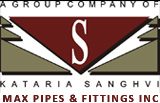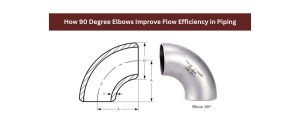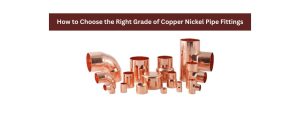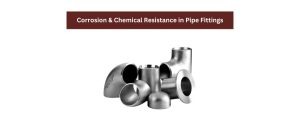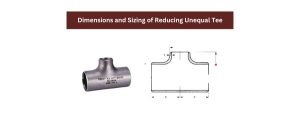In the world of piping systems, reducers are super important for hooking up pipes of different sizes, making sure fluids flow smoothly, and keeping pressure levels just right. When it comes to reducers, concentric and eccentric ones really stand out because of their unique designs and what they can do. In this guide, we’re going to see what sets concentric and eccentric reducers apart, where you’d use them, their benefits, and what to think about when choosing between them.
What is a Concentric Reducer?
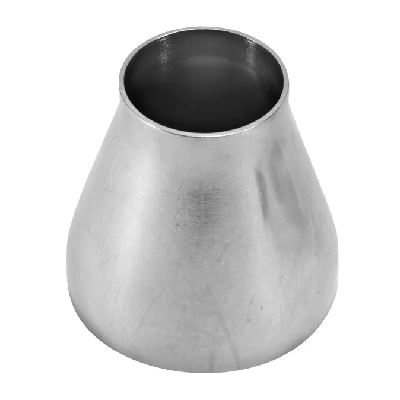
A concentric reducer is a type of pipe fitting designed to connect pipes of differing diameters in a straight line. It features a symmetrical design where the center axis of the inlet and outlet pipes align, resulting in a smooth transition between the two pipe sizes.
Concentric Reducer Design and Construction
Concentric reducers typically have a conical shape, with one end having a larger diameter than the other. The tapering transition allows for a gradual reduction in pipe diameter, minimizing turbulence and pressure losses within the piping system. These reducers are commonly manufactured using materials such as carbon steel, stainless steel, and various alloys, ensuring durability and corrosion resistance.
Concentric Reducer Applications –
Concentric reducers find widespread applications across various industries, including:
- Chemical Processing: Used in chemical plants to connect pipelines carrying different chemicals or fluids.
- Oil and Gas: Employed in pipelines for crude oil, natural gas, and refined petroleum products.
- Water Treatment: Utilized in water distribution systems to transition between pipes of different sizes.
- HVAC Systems: Integrated into heating, ventilation, and air conditioning systems for ductwork modifications.
Advantages of Concentric Reducer
- Uniform Flow: The symmetrical design of concentric reducers promotes smooth fluid flow, minimizing pressure drop and turbulence.
- Space Efficiency: Due to their compact design, concentric reducers occupy less space compared to eccentric reducers, making them ideal for tight or confined spaces.
- Cost-Effectiveness: Generally more economical to manufacture and install compared to eccentric reducers.
What is an Eccentric Reducer?
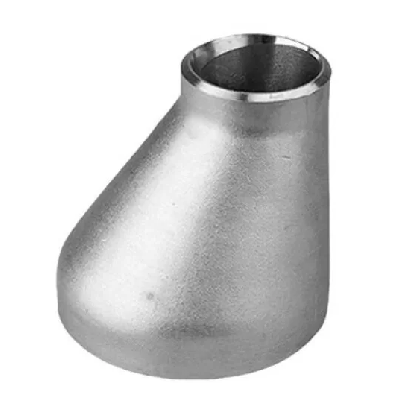
An eccentric reducer is another type of pipe fitting used to connect pipes of varying diameters. Unlike concentric reducers, eccentric reducers feature an offset design where the center axis of the inlet and outlet pipes do not align. Instead, the reduction occurs along an eccentric axis, resulting in a flat or offset shape.
Design and Construction
Eccentric reducers exhibit a unique design with one side having a larger diameter and the other side being smaller and offset from the centerline. This offset configuration enables the eccentric reducer to maintain a consistent fluid level within the piping system, preventing air or gas accumulation. Similar to concentric reducers, eccentric reducers are fabricated from materials such as carbon steel, stainless steel, and alloys, ensuring strength and durability.
Applications of Eccentric Reducer
Eccentric reducers are commonly used in applications where the flow of fluids or gases must be controlled or where air pockets need to be avoided. Key applications include:
- Sewage and Wastewater Systems: Employed to prevent the buildup of air pockets and facilitate smooth flow in sewage and wastewater pipelines.
- Pumping Systems: Integrated into pump discharge lines to prevent air entrapment and ensure efficient operation.
- Slurry Transport: Used in pipelines transporting abrasive slurries, where air pockets can cause blockages or pump cavitation.
- Chemical Processing: Utilized in chemical plants for applications requiring controlled fluid flow and avoidance of air pockets.
Eccentric ReducerAdvantages
- Air Pocket Prevention: The offset design of eccentric reducers helps prevent the accumulation of air or gas pockets within the piping system, ensuring continuous and efficient flow.
- Flow Control: Ideal for applications where flow direction or pressure control is essential, such as in sewage systems or pump discharge lines.
- Versatility: Suitable for various applications across various industries, providing flexibility in piping system design.
Considerations and Selection
Flow Requirements
- Concentric Reducer: Ideal for applications requiring a smooth and uniform flow with minimal pressure drop.
- Eccentric Reducer: This product is suitable for applications where air or gas pocket prevention, flow control, or pump efficiency are critical factors.
Space Constraints
- Concentric Reducer: More space-efficient due to its symmetrical design, making it suitable for installations in confined spaces.
- Eccentric Reducer: Due to its offset configuration, this type requires additional space and should be considered in tight or congested environments.
Fluid Characteristics
- Concentric Reducer: Suitable for handling clean fluids or non-abrasive materials where pressure drop and turbulence must be minimized.
- Eccentric Reducer: This type is preferred for applications involving slurries, wastewater, or fluids prone to air entrainment, where maintaining a consistent flow profile is essential.
Installation and Maintenance
- Concentric Reducer: Typically easier to install and maintain due to its straightforward design and symmetrical shape.
- Eccentric Reducer: This may require careful alignment during installation to ensure proper flow characteristics and avoid air pockets.
In conclusion, concentric and eccentric reducers play indispensable roles in piping systems, offering distinct advantages and functionalities based on specific application requirements. By understanding the differences and considering factors such as flow characteristics, space constraints, and fluid properties, engineers and designers can make informed decisions when selecting the most suitable reducer for their piping applications. Whether it’s ensuring uniform flow, preventing air pockets, or optimizing pump efficiency, the choice between concentric and eccentric reducers ultimately depends on the unique demands of the system and the desired performance outcomes.
